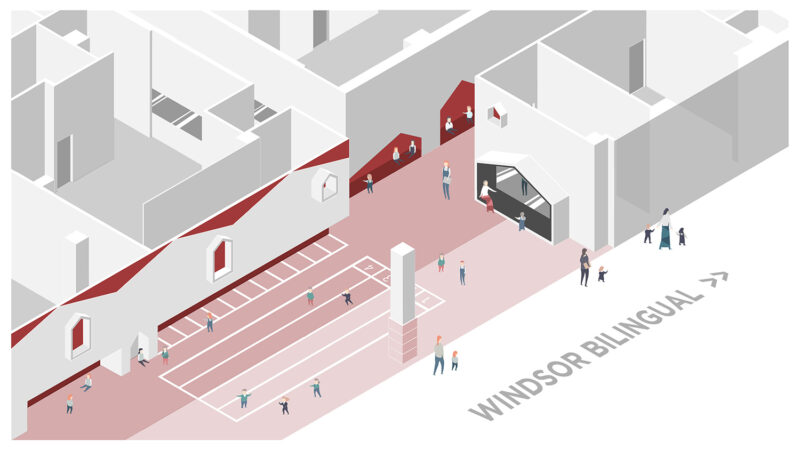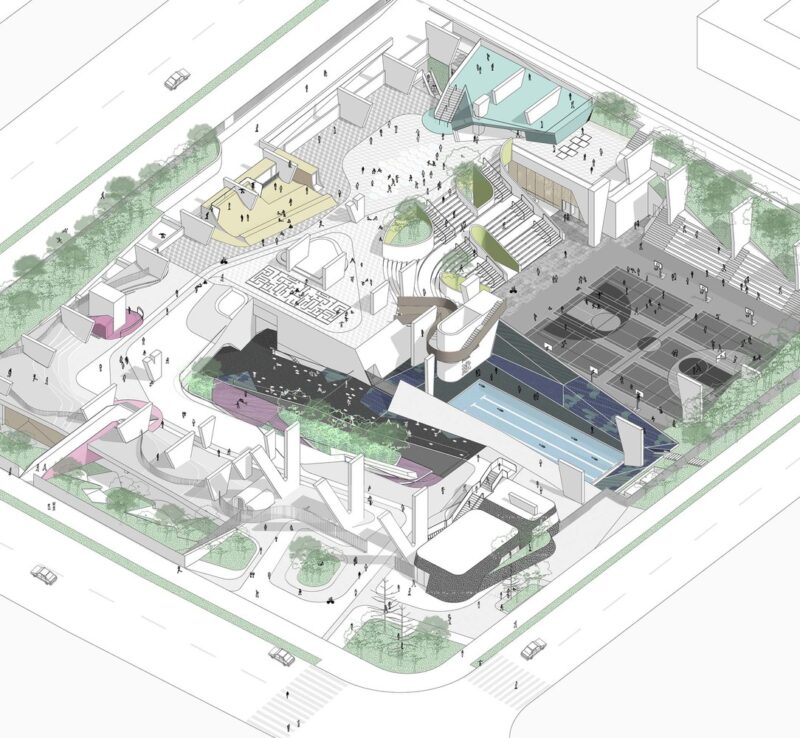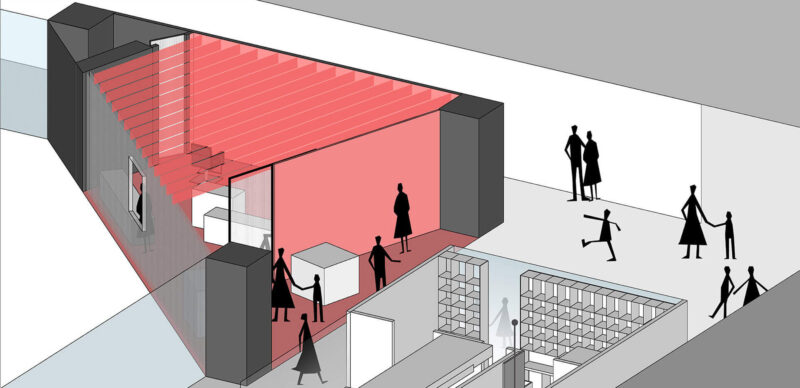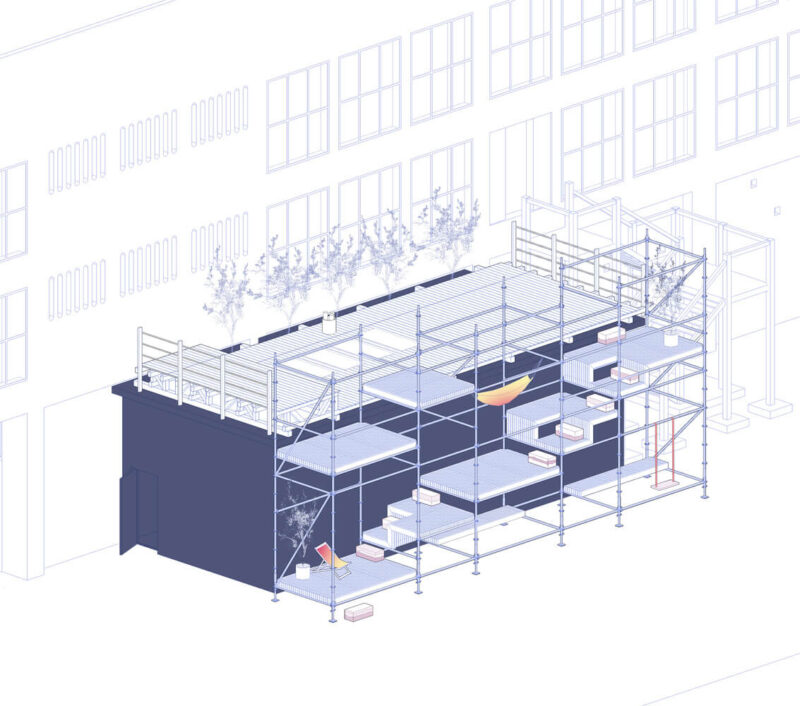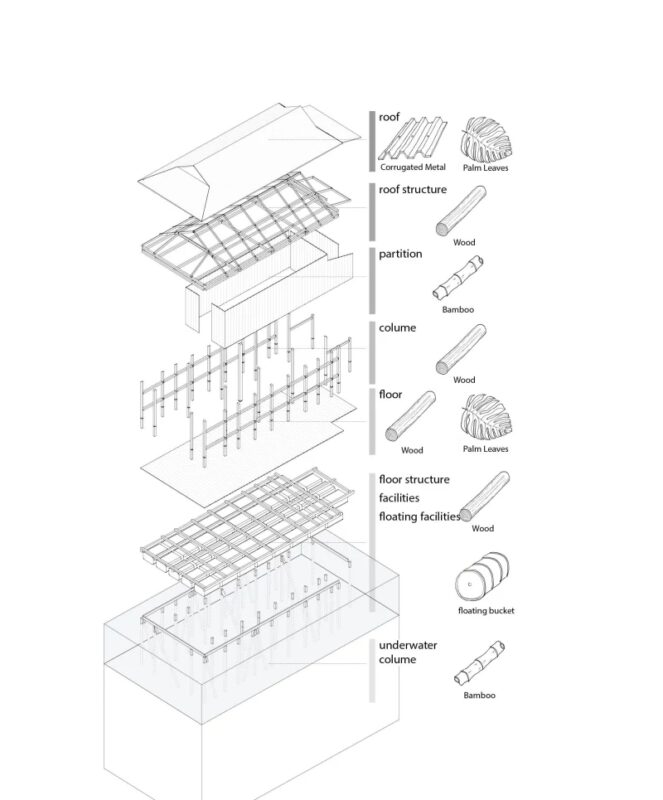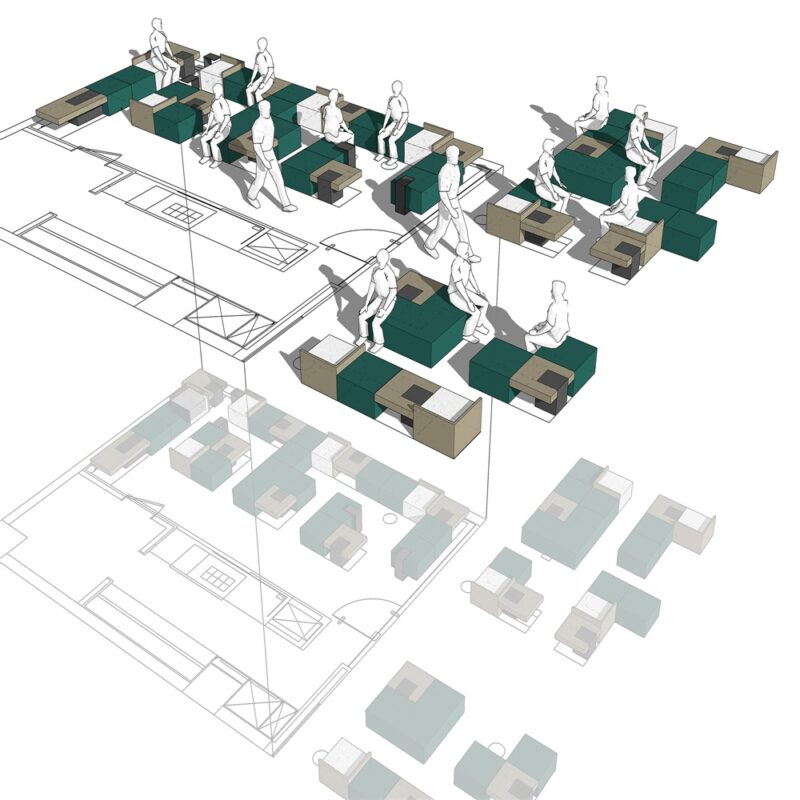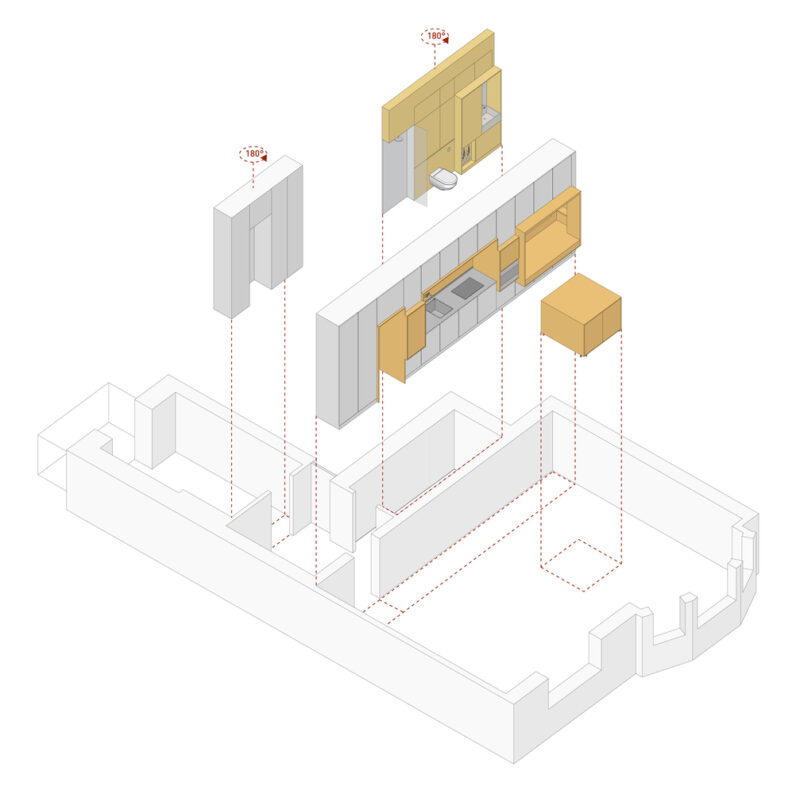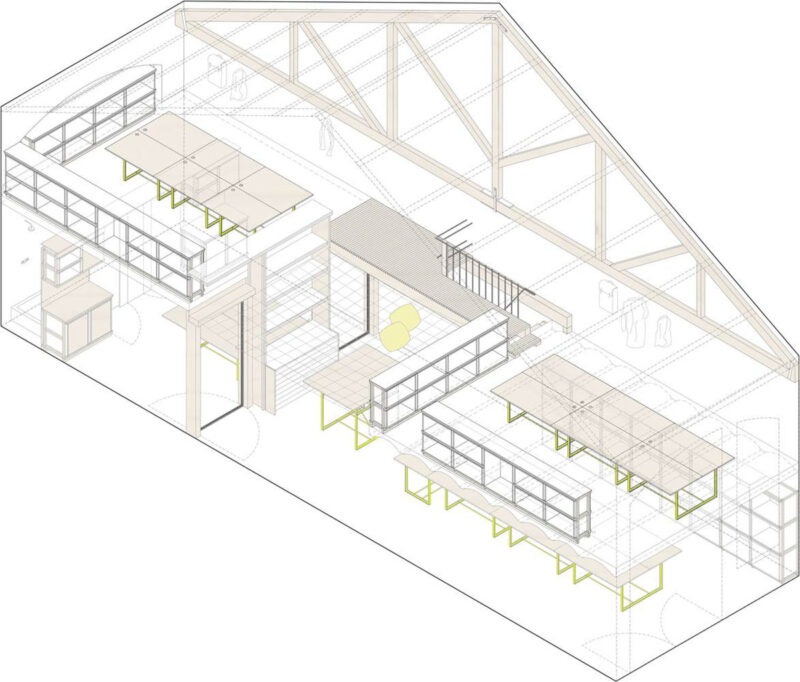阿姆斯特丹現在是一個三極無生產力的城市。那麼我們如何扭轉局勢呢?通過挖掘阿姆斯特丹鐵路和道路基礎設施不可思議的潛力!這個現有的網絡和它的節點和剩餘的空間顯示自己是重新連接城市、港口和機場的理想載體。由富有生產力的村莊組成的網絡,每個村莊都有自己的特點,形成了一個以多中心為中心的富有生產力的城市,能夠重新引入阿姆斯特丹的循環經濟。
Amsterdam now functions as a three-poled non-productive city. So how do we turn the tide? By exploiting the incredible potential of Amsterdam’s rail and road infrastructure! This existing network with its nodes and left over spaces presents itself as the ideal carrier for re-connecting city, harbour and airport. A network of productive villages, each with its own character, resulting in a poly-centric productive city capable of re-introducing Amsterdam’s circular economy.
和許多歐洲城市一樣,阿姆斯特丹最初是一個支持當地經濟的村莊。隨著時間的推移,村莊和港口一起發展,重疊和交織。運河為船隻服務,同時提供了一種運輸方式,市政廳前的廣場上每天都有集市,鐵匠的工作坊在當地劇院旁邊。這個城市是一個能夠自給自足的多產世界。
Like many European cities, Amsterdam started out as a village in support of a local economy. Over time, the village and harbour developed together, overlapping and interweaving. The canals served the ships while providing a mode of transportation, the square in front of the town hall hosted the daily market and the blacksmith’s workshop sat alongside the local theater. The city was a productive world capable of sustaining itself.
不幸的是,城市和生產的聯姻結束了。1876年,卡納亞爾號的建造使港口向西駛出城市,逐漸降低了生產水平,變得更像是一艘貨物船。此外,在第一次世界大戰之後,史基浦機場(Schiphol Airport)的引入,放大了全球化的影響,鼓勵阿姆斯特丹將自己重塑為一個創造性的知識經濟。
Unfortunately, the marriage between city and production came to an end. The construction of the Noordzee Kanaal in 1876 saw the harbour moving westwards, out of the city, gradually decreasing its level of production and becoming more just a vessel for goods. Furthermore, globalisation, amplified by the introduction of Schiphol Airport after WW1, encouraged the city of Amsterdam to reinvent itself as a creative knowledge economy.
如今,城市、港口和機場構成了阿姆斯特丹的經濟版圖,但它們的地理差異阻礙了相互作用,而這是有代價的。例如,電力和熱能的能源供應是進口的,依賴化石燃料,回收的廢物被減少循環使用,平均一頓飯跑了3萬公裏。
Today, city, harbour and airport make up Amsterdam’s economic landscape, but their geographical divorce prevents interaction, and this comes at a price. For example, energy supplies for electricity and heat are import and fossil fuel dependent, recycled waste is down-cycled and an average dinner has traveled 30,000 kilometers.
阿姆斯特丹現在是一個三杆無生產力的城市。那麼我們如何扭轉局勢呢?通過挖掘阿姆斯特丹鐵路和道路基礎設施不可思議的潛力!這個現有的網絡和它的節點和剩餘的空間顯示自己是重新連接城市、港口和機場的理想載體。
Amsterdam now functions as a three-poled non-productive city. So how do we turn the tide? By exploiting the incredible potential of Amsterdam’s rail and road infrastructure! This existing network with its nodes and left over spaces presents itself as the ideal carrier for re-connecting city, harbour and airport.
由富有生產力的村莊組成的網絡,每個村莊都有自己的特點,形成了一個以多中心為中心的富有生產力的城市,能夠重新引入阿姆斯特丹的循環經濟。
A network of productive villages, each with its own character, resulting in a poly-centric productive city capable of re-introducing Amsterdam’s circular economy.
Piarcoplein每天的客流量為5萬人,是第一個高產村莊的理想試驗場。今天,廣場上有許多基礎設施;一係列美麗的柱子和橋梁。Piarco將這兩個關鍵元素作為空間布局的催化劑,在柱子和橋梁之間編織,打破了場地的廣闊,引入了一係列人性化的景觀。
With a daily passenger rate of 50,000 people, Piarcoplein is the ideal test ground for the first productive village. Today, the square consists of a landscape of infrastructures; a series of beautiful columns and bridges. Celebrating these two key elements as catalysts for spatial layout, Piarco’s productive village weaves around and between columns and bridges, breaking up the site’s vastness and introducing a sequence of human scale landscapes.
“誘導需求”的原理證明了提供停車場隻會產生汽車交通。因此,減少停車將減少汽車交通。人類行為的這種變化不是一朝一夕就能實現的,但需要逐步實現——世界上越來越多的城市都采用了這種方法。
The principle of “induced demand” proves that the provision of car parking simply generates car traffic. Reducing car parking will therefore decrease car traffic. This change in human behavior cannot be established overnight, but calls for a gradual implementation – an approach that is adopted by an increasing amount of cities around the world.
在Piarco改造的每一個階段,生產村的工作方式會根據停車位的大小而有所不同。利用現有橋梁和未來橋梁之間建設的機會的限製,讓村莊可以窺視到訓練水平,以宣布自己,並吸引眾多旁路者的目光。減少的汽車交通將最終使阿姆斯特丹的高速公路有機會建立快速通道,連接這個多中心城市的高產村莊。
In each phase of Piarco’s transformation, the productive village works differently according to the extent of parking space. Exploiting the limitation of opportunities to build between existing and future bridges allows the village to peek up to train level to announce itself and catch the eye of numerous by-passers. Reduced car traffic will eventually allow the opportunity to create fast lanes throughout Amsterdam’s highways connecting the productive villages of the poly-centric city.
混合類型學——我們所知道的城市世界和生產世界的共生關係——將在Piarco村流行。這些類型提供了各種形狀和尺度的空間,一個能夠適應極其靈活的生產計劃的永久基地。
Hybrid typologies – a symbiosis of the civic world and the productive world as we know it – will populate Piarco Village. These typologies provide spaces in a variety of shapes and scales, a permanent base capable of adapting to an extremely flexible productive programme.
消息很快就會傳開,為Piarco的用戶建立了一個平台來展示他們富有成效的實驗。現有的倡議得到授權,而新倡議得到啟動——Fairphone、廢棄連接和Vandebron隻是開始。一個新的強大的視覺身份和一個高效的節目平衡了Piarco周圍的平淡和匿名的生活樂趣,這是以前無法想象的。
Word will spread soon, establishing a platform for Piarco’s users to showcase their productive experiments. Existing initiatives are empowered while new ones are initiated – Fairphone, Scrap Connection and Vandebron were only the beginning. A new strong visual identity and a highly productive programme counterweight Piarco’s surrounding blandness and anonymity with a joy for life that was previously unimaginable.
項目名稱: 阿姆斯特丹循環經濟&生產性城市概念設計
設計團隊:BOANOPRIŠMONTAS,VALENTINE GRUWEZ,LIEVE SMOUT
所在位置:荷蘭·阿姆斯特丹
項目屬性:城市規劃概念設計
完成時間: 2017
版權歸屬:design © BOANOPRIŠMONTAS











